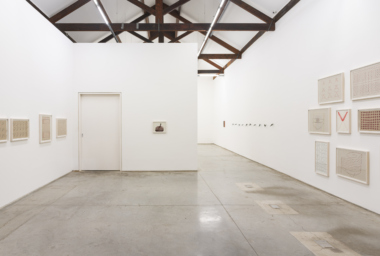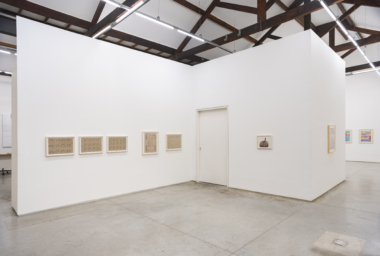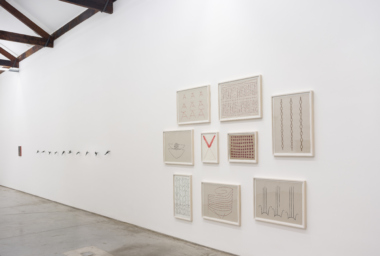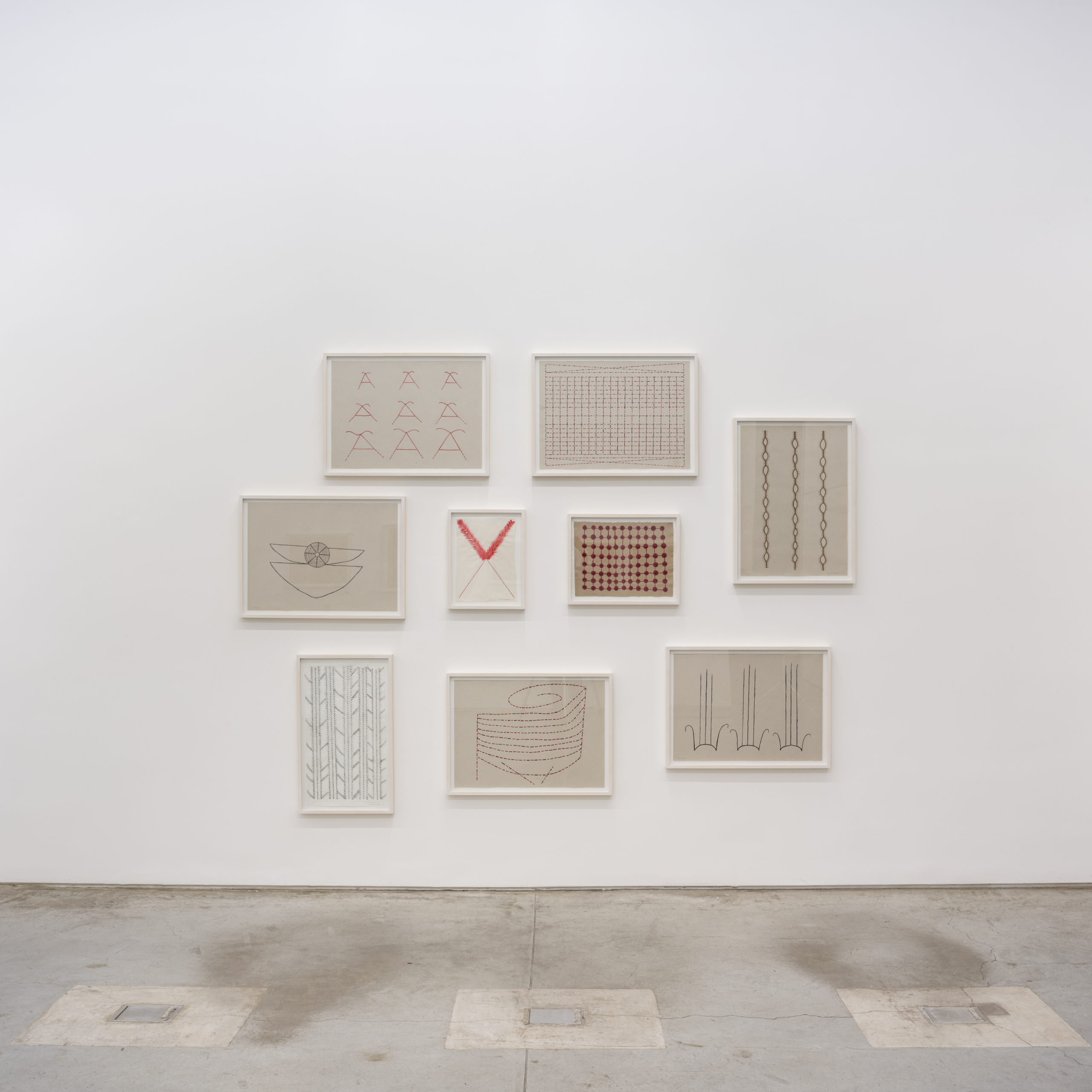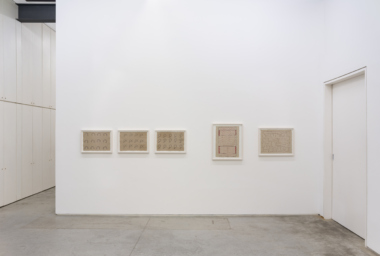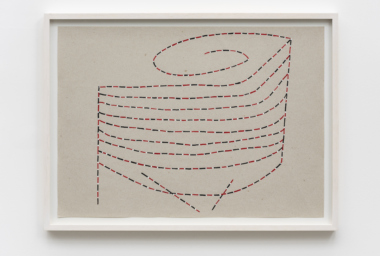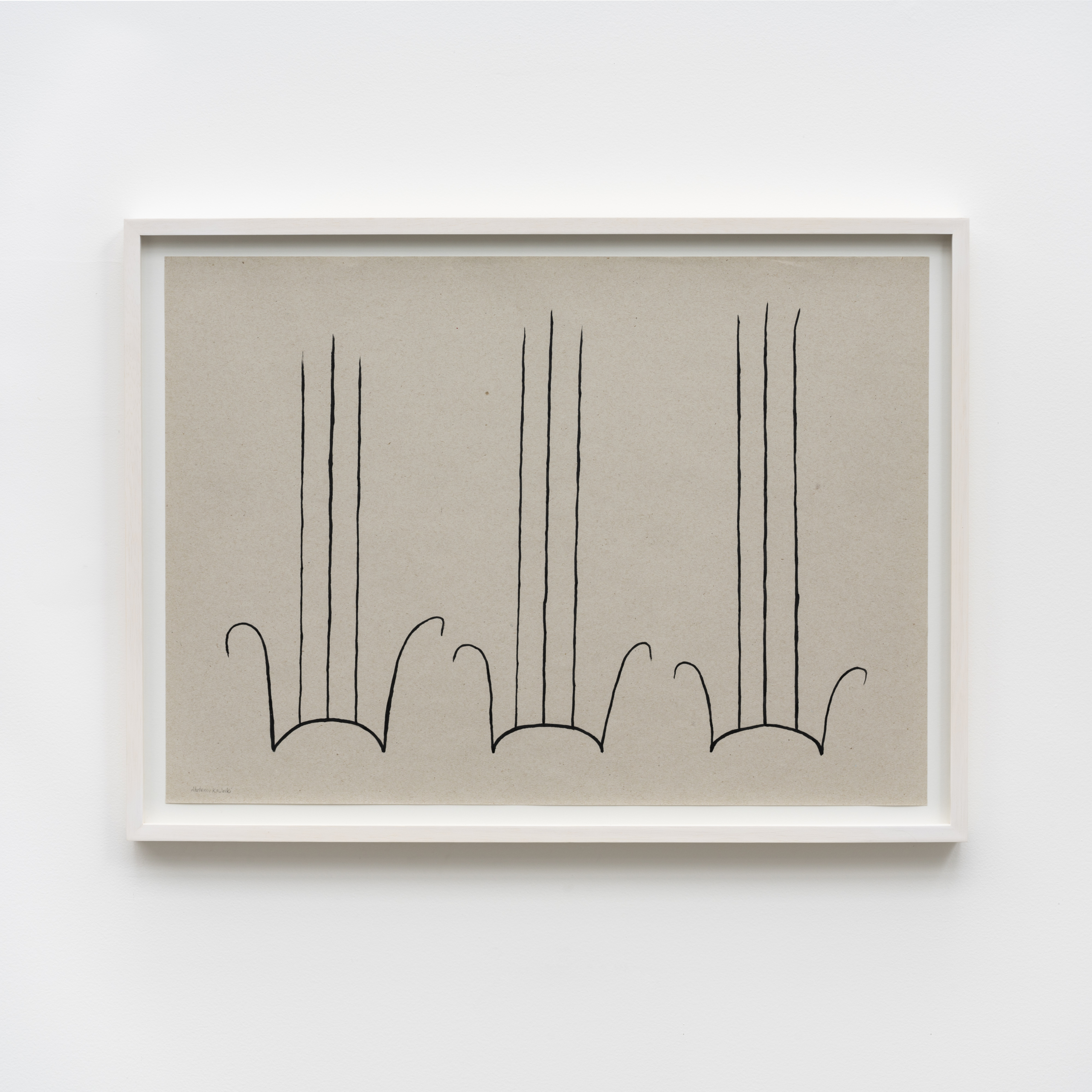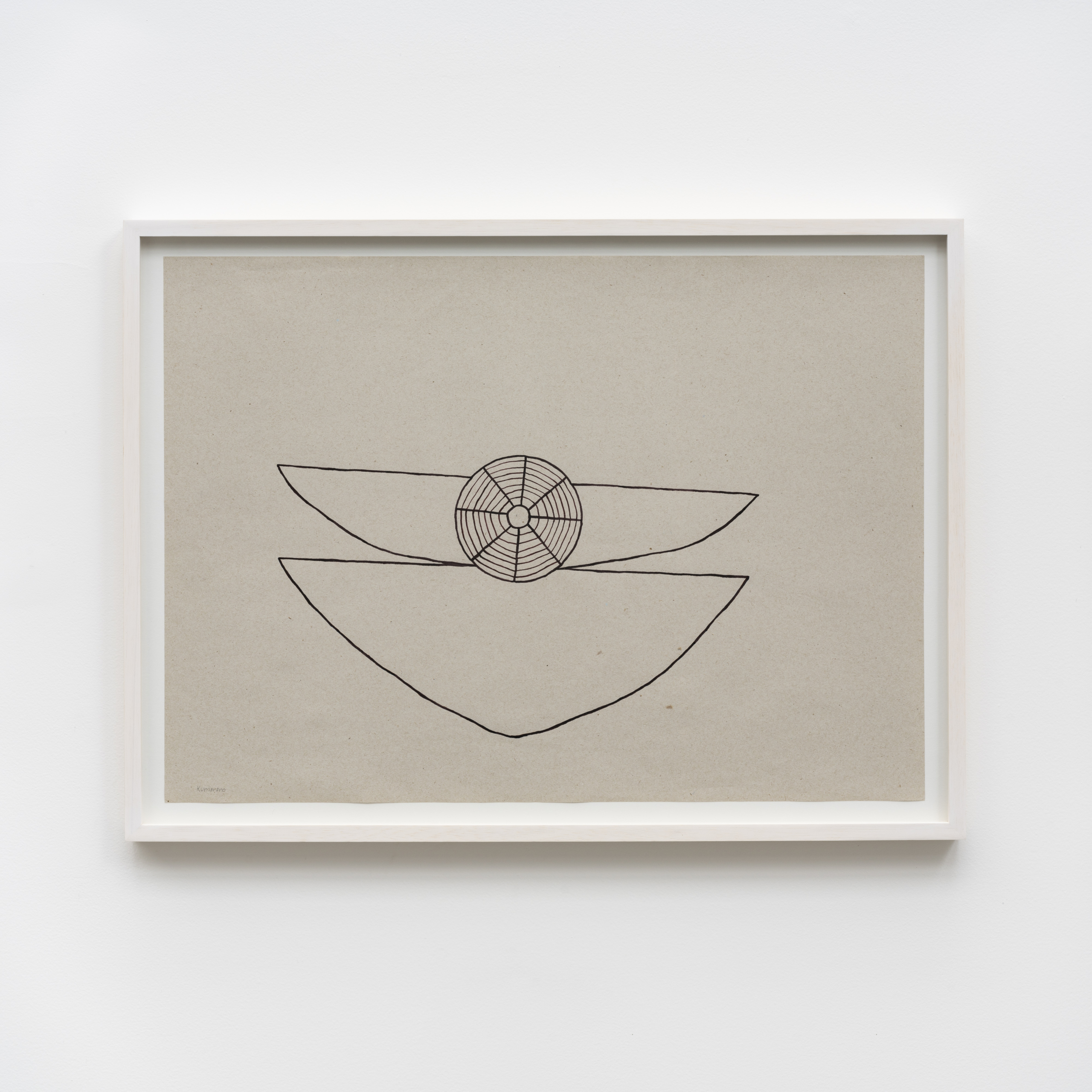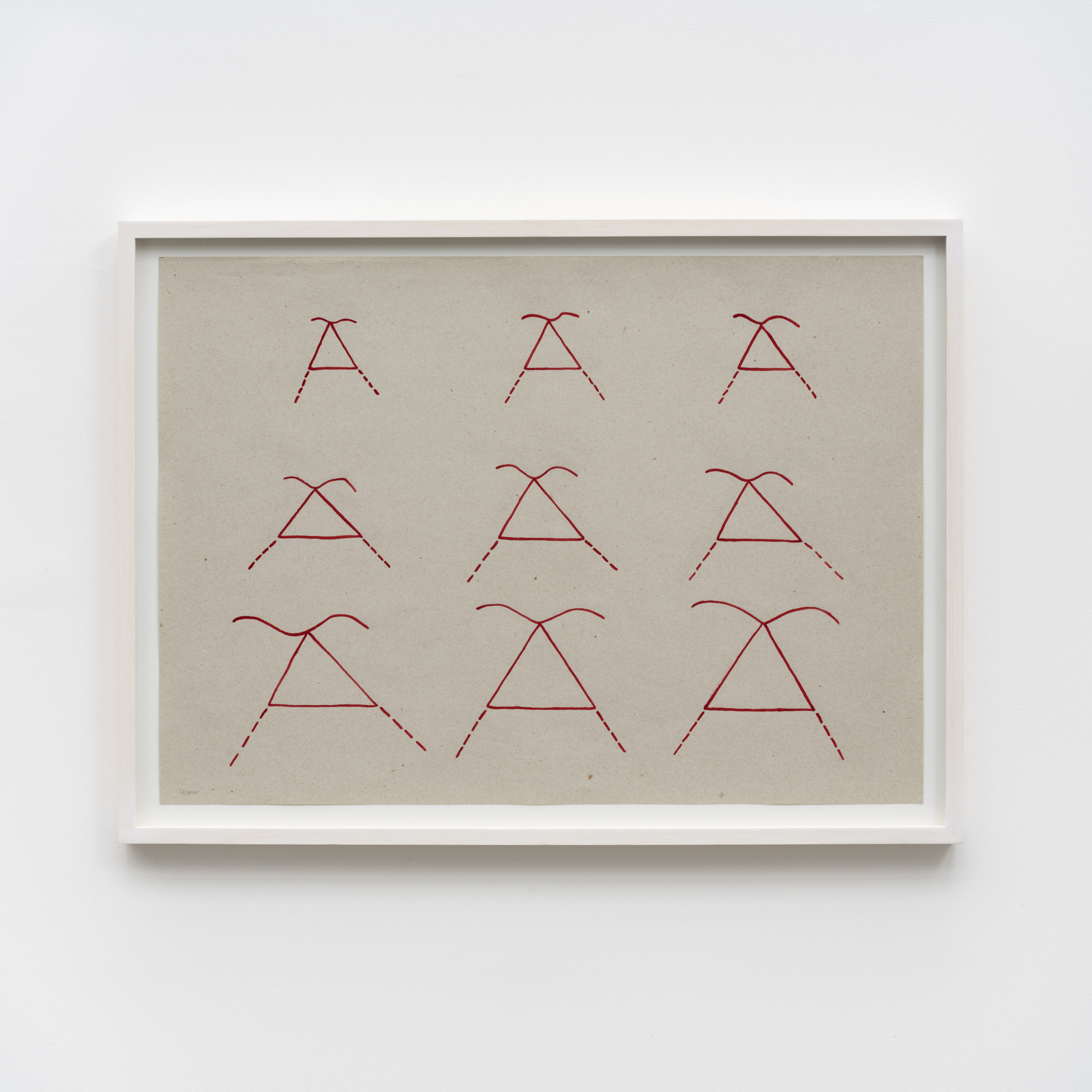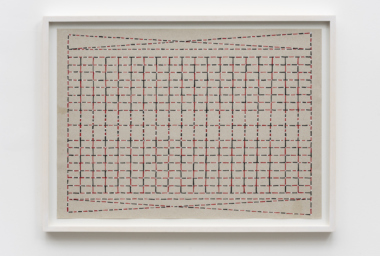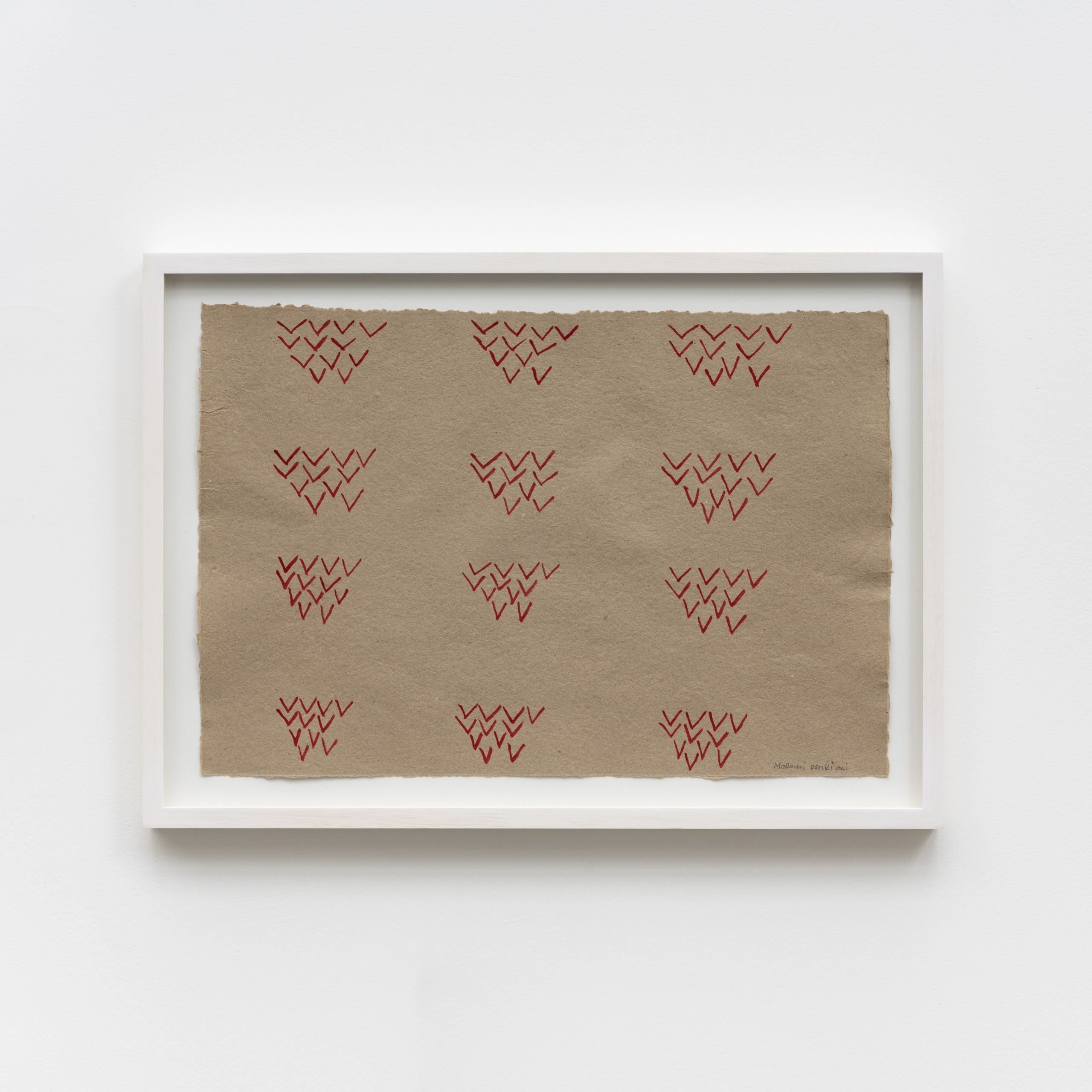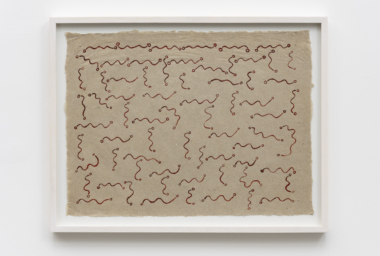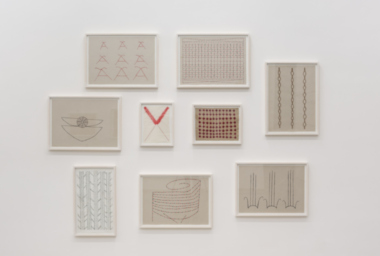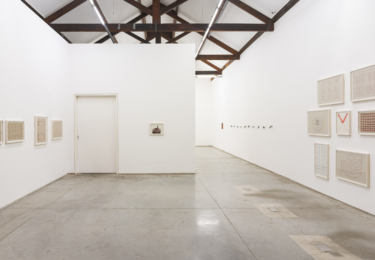
Sheroanawe Hakihiiwe
Jun 12 – Aug 7, 2021
Carpintaria
Rua Jardim Botânico 971,
Rio de Janeiro
Directions
Download
We are delighted to present Sheroanawe Hakihiiwe’s first solo exhibition in Brazil. With this show, we inaugurate the Aquário — the front space at Carpintaria, visible from the garden — dedicated to introducing new voices from the circuit.
Born in 1971 in Amazonas, Venezuela, Sheroanawe Hakihiiwe is an indigenous artist living in Pori Pori, a Yanomami community in El Alto Orinoco. Hakihiiwe develops a body of work that incorporates drawing and color into the oral tradition of his people — the nature of spiritual beliefs, cultural and social practices. Straight, parallel, curved and dotted lines, arcs, circles, triangles, grids, webs, and rings evoke insects, animals, plants, and spirits of the forest. His practice began in the 1990s when he met the Mexican artist Laura Anderson Barbata, who taught him how to make paper with native fibers such as Shiki or Abaca, on which he applies vegetable ink. Together, they founded the Yanomami Owëmamotima community project, a pioneering initiative that has since enabled the publication of books produced collectively by the Yanomami community.
Sheroanawe Hakihiiwe by Catalina Lozano
Sheroanawe Hakihiiwe is a Yanomami artist who lives and works in Pori Pori, a community in the Upper Orinoco, at the Venezuelan side of the Amazon rainforest. While in the Amazon, where he has no communication outside his territory, he keeps a notebook of sketches where he develops a synthetic visual language. He then spends periods of time in Caracas where he translates them using different techniques such as drawing, painting and screen-printing onto paper and fabric. In Mohomi pariki omi, for instance, he depicts the breast of an eagle in its most minimal yet expressive form.
The protection of Yanomami knowledge and memory is a key motivation behind Hakihiiwe’s work, who seeks to counteract the crushing imposition of Western knowledge and technologies on indigenous peoples. Constantly harassed by different forms of extractivism, evangelization, and assimilation, the Yanomami living in the efficacious fictions called Venezuela and Brazil, like most indigenous people around the world, have had to endure constant attempts of erasure of their worldviews and daily practices. Considered “unnamed” by a missionary—Yanomami people do not use names according to the Western canon—, the artist was called after Italian Catholic priest Juan Bosco, a moniker he rejected as an adult and changed to Sheroanawe which relates to his place of birth.
Yanomami people don’t normally draw on paper but on their bodies. Shaman and activist, Davi Kopenawa Yanomami explains how the words that contain knowledge are kept close so that they don’t escape. Rather than “drawn” on books, or as he calls them “image skins,” knowledge belongs to the community and to the territory. This radically different understanding of the technologies that contain and transmit information are very important to destabilize hegemonic ways of imagining the word. In Thari keke, Hakihiiwe represent a shield to protect oneself from spirits, an indication of dimensions that are invisible to most people but that require a series of technological devices embedded in specific cosmogonies of the Amazon.
Hakihiiwe learnt to make paper with plant fibers with Mexican artist Laura Anderson Barbata in 1992. This new support allowed the imagery destined to the body to travel outside the Amazon. In some cases, this is more explicit, as in Mapuu (Face funerary Painting), 2019, while in others the format of the paper seems to influence more directly the motif, as in Hino naripe (Honeycomb), 2019. His work is part of a tradition of abstraction, not connected to Western genealogies, but to Amazonian cosmologies. In a taxonomy that runs contrary to the classificatory ambition of Western tradition, these drawings refer to the context and agency of an organism, instead of representing it, Sheroanawe evokes and recreates vital rhythms. This is particularly interesting in the 2018 series dedicated to Huwe moshi (coral snake). The works reveal structures rather than shapes, organization rather than forms against a background, exposing a way of seeing where nature and culture are not distinguishable from one another.
About the artist
Sheroanawe Hakihiiwe (Sheroana, Amazonas, Venezuela, 1971). Lives and works in El Alto Orinoco, Vezezuela. Among his solo exhibitions, the following stand out: Puhi Tropao (Estar feliz), Galería Abra, Caracas, Venezuela (2017); Puhi Tropao (Estar feliz), Museo del Diseño y la Estampa Carlos Cruz-Diez, Caracas, Venezuela (2016); Porerimou (Viajar como espíritu invisible), Oficina#1, Caracas, Vezuela (2013); Oni The pe Komi, Oficina#1, Caracas, Venezuela (2010); Etnias bajo la piel, Escuela Nacional de Pintura, Escultura y Grabado La Esmeralda, Mexico City, Mexico (2010). Among the group exhibitions, the following stand out: A Natural History of Ruins, Pivô, São Paulo, Brazil (2021); Berlin Biennale – The Bones of the World, Berlin, Germany (2019); Le jour des esprits est notre nuit, CRAC Alsace, Altkirch, France (2019); Amazonías, Centro de Arte Matadero Madrid, Spain (2019); XII Shanghai Biennale, Power Station of Art, Shanghai, China (2018)
This exhibition was possible thanks to our collaboration with Sheroanawe Hakihiiwe’s gallery in Venezuela, ABRA. Special thanks to its founders Melina Fernández Temes and Luis Romero. abracaracas.com
